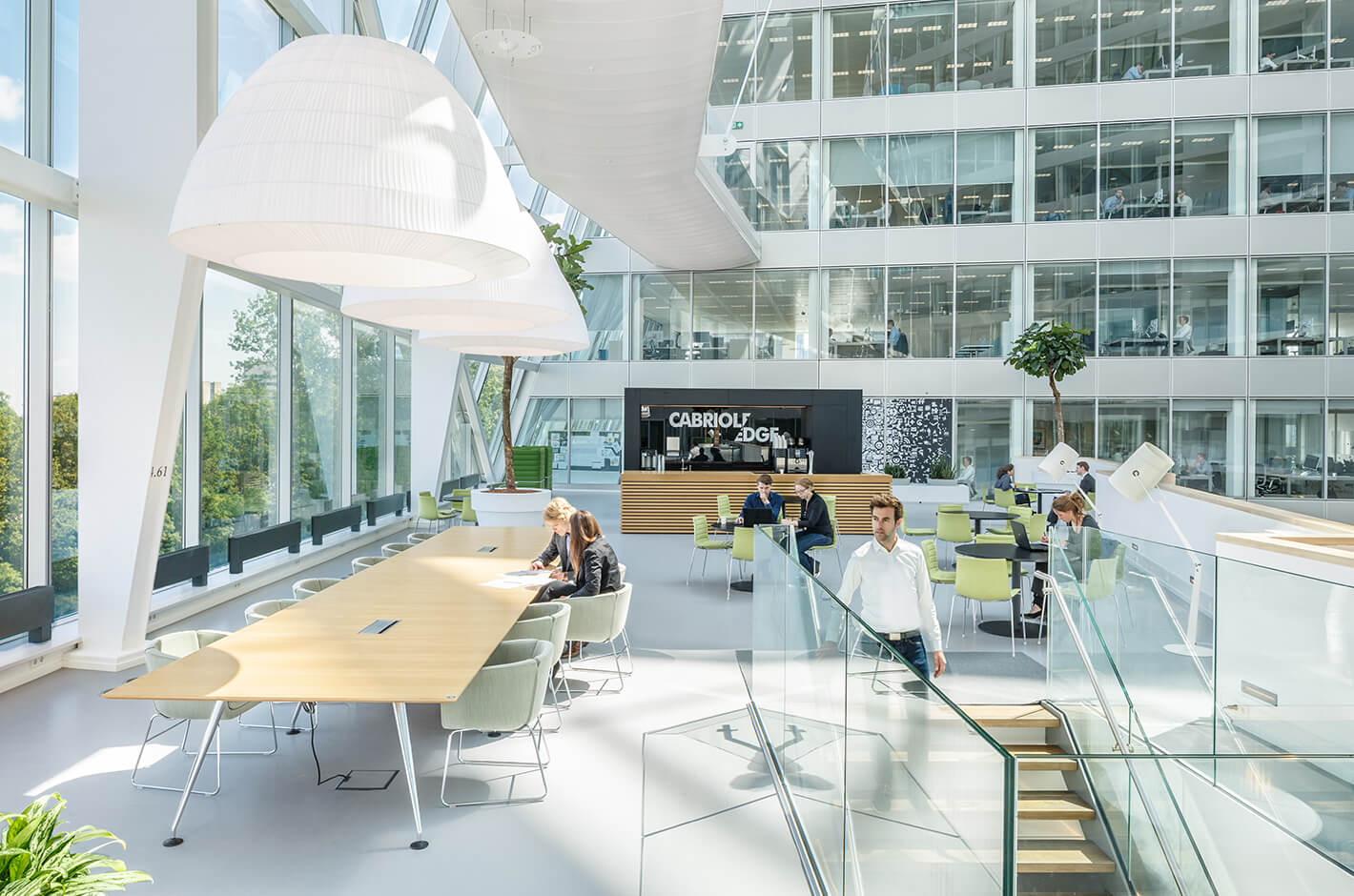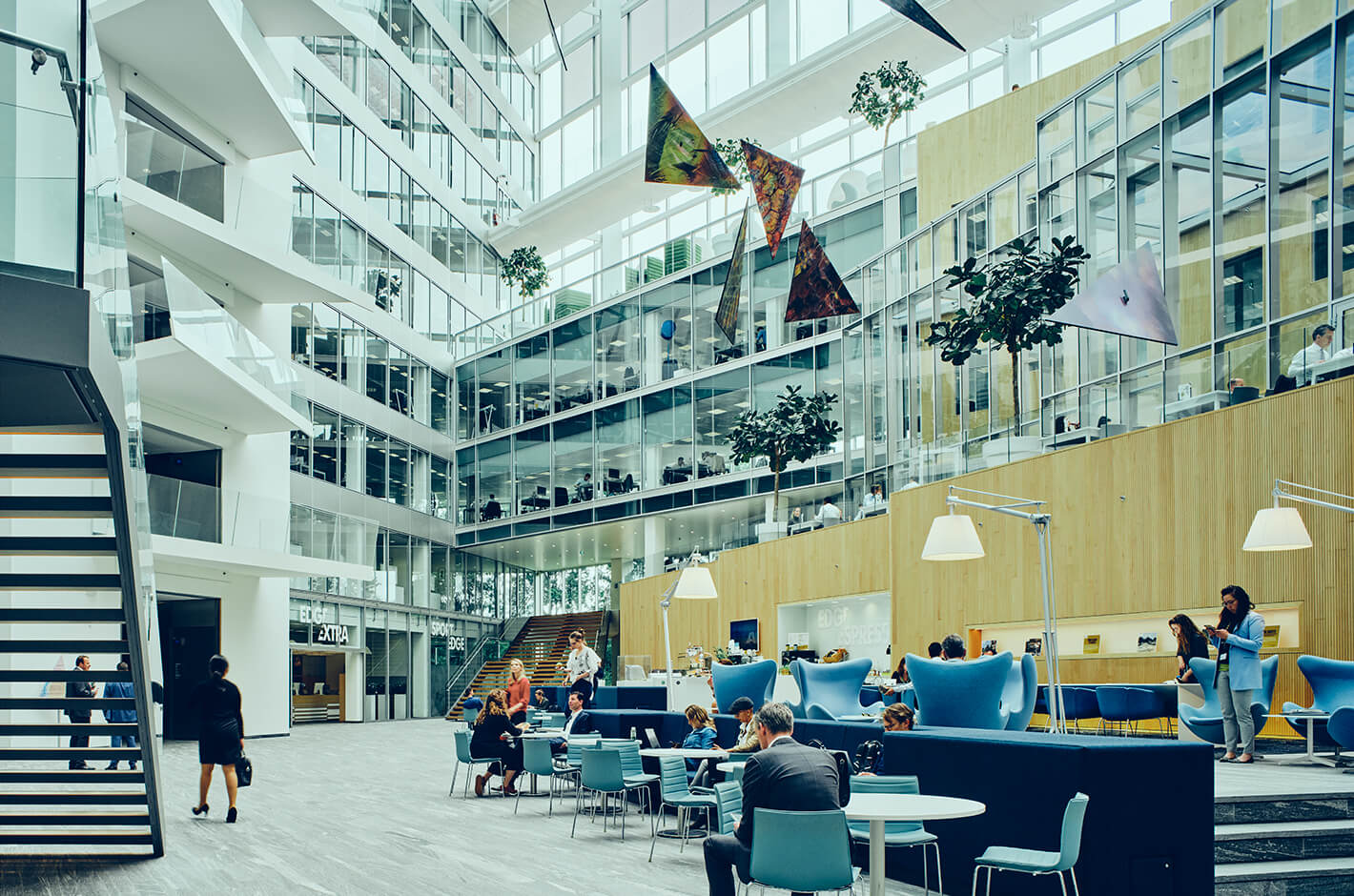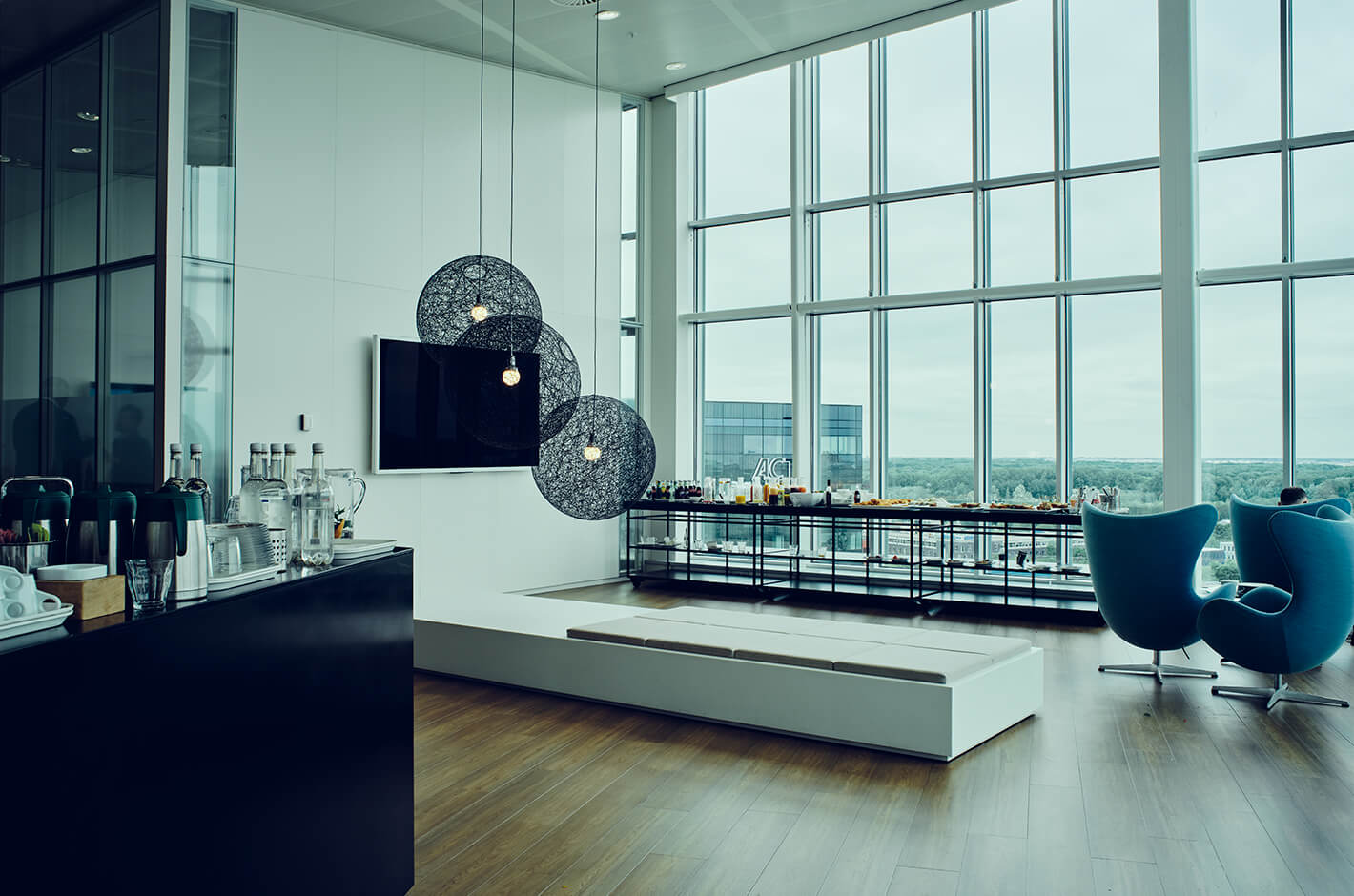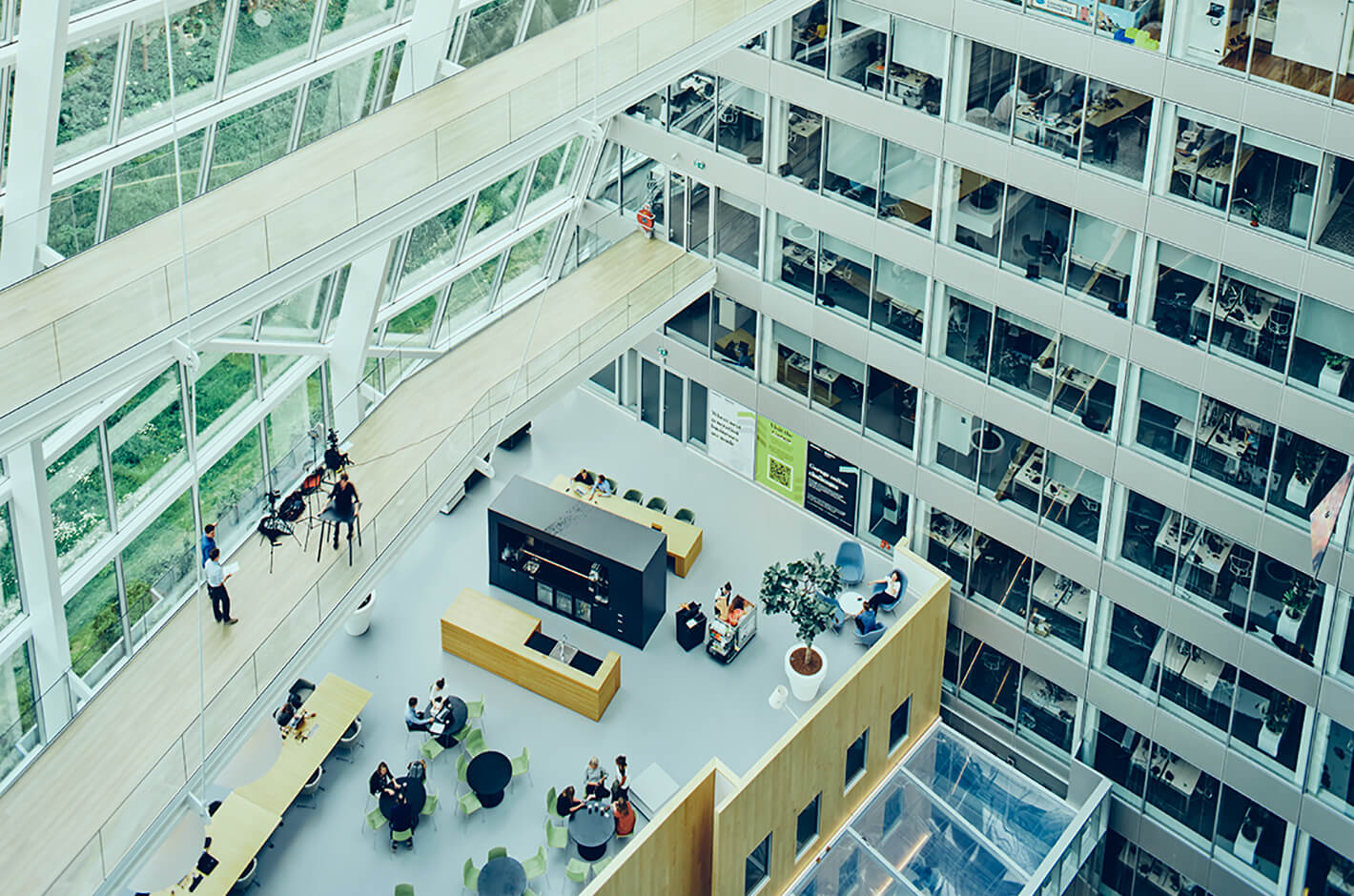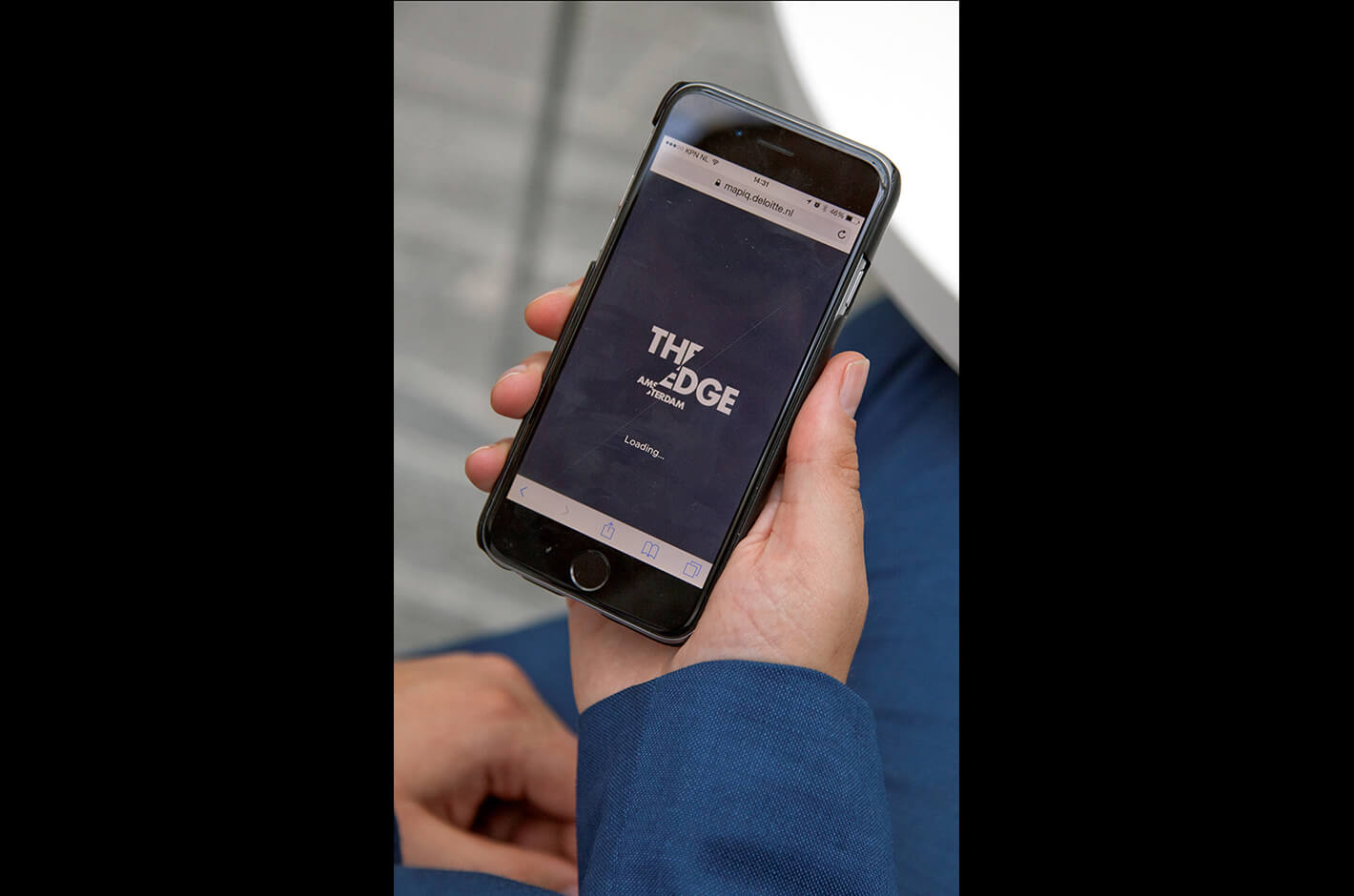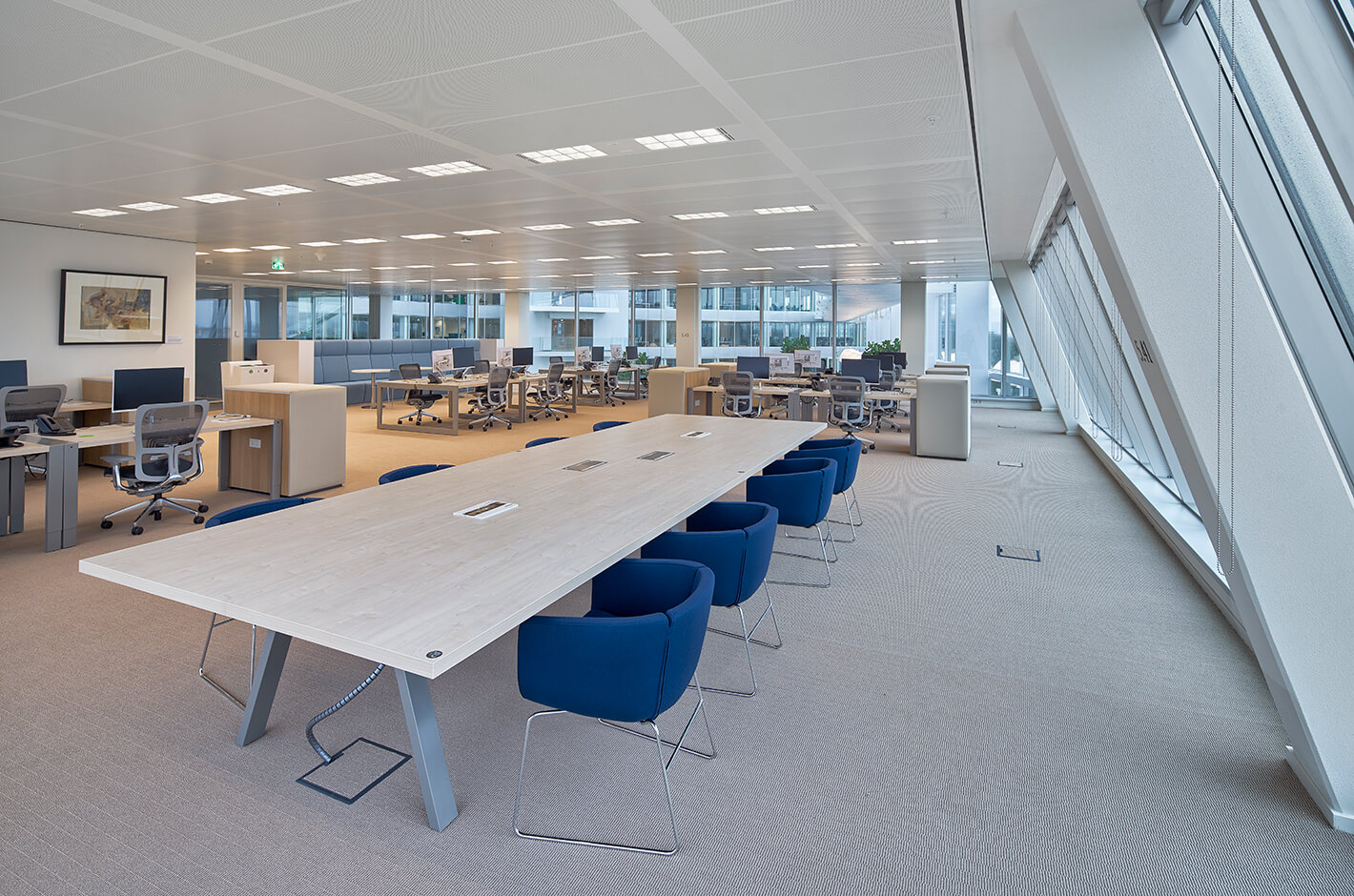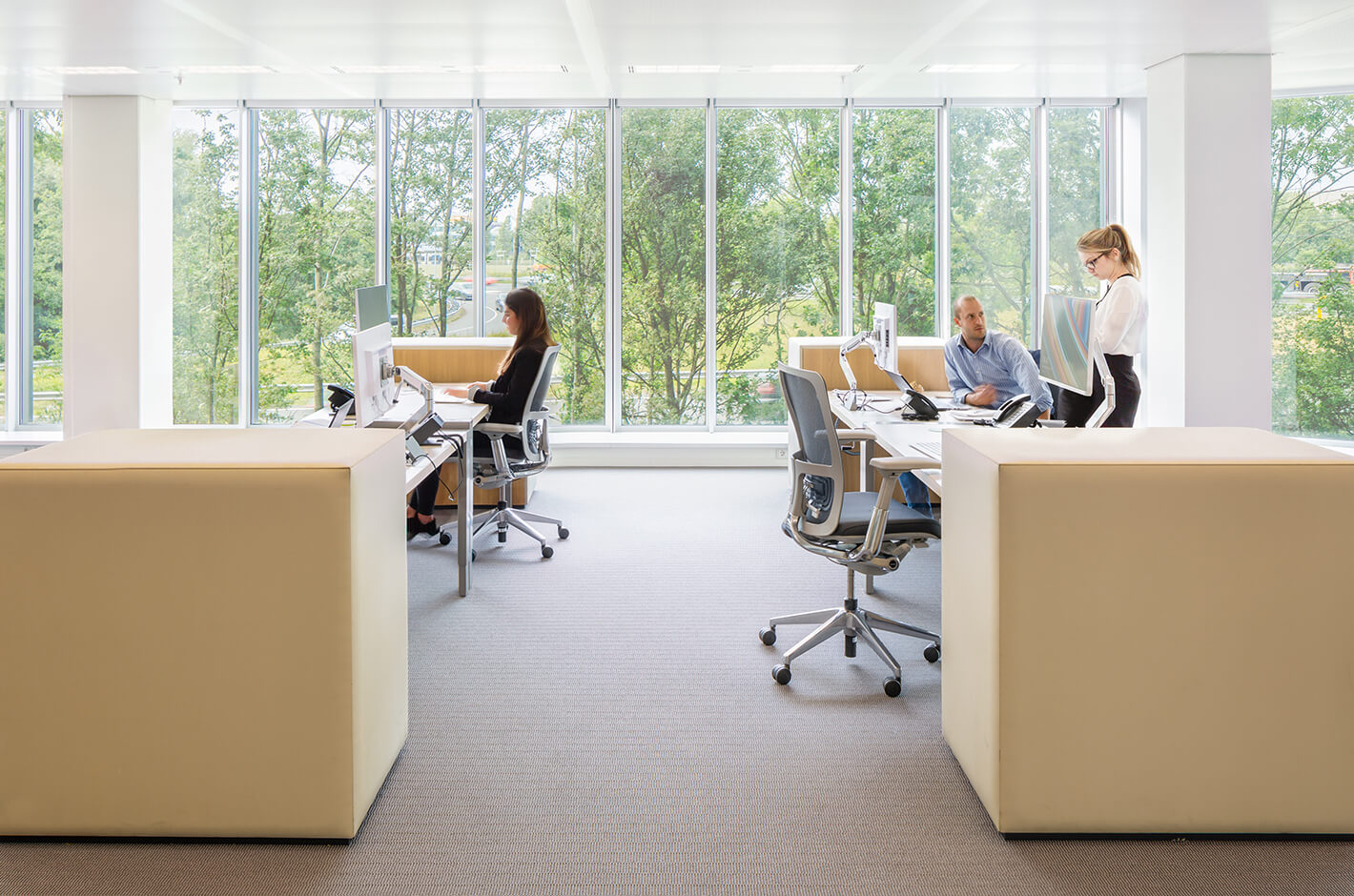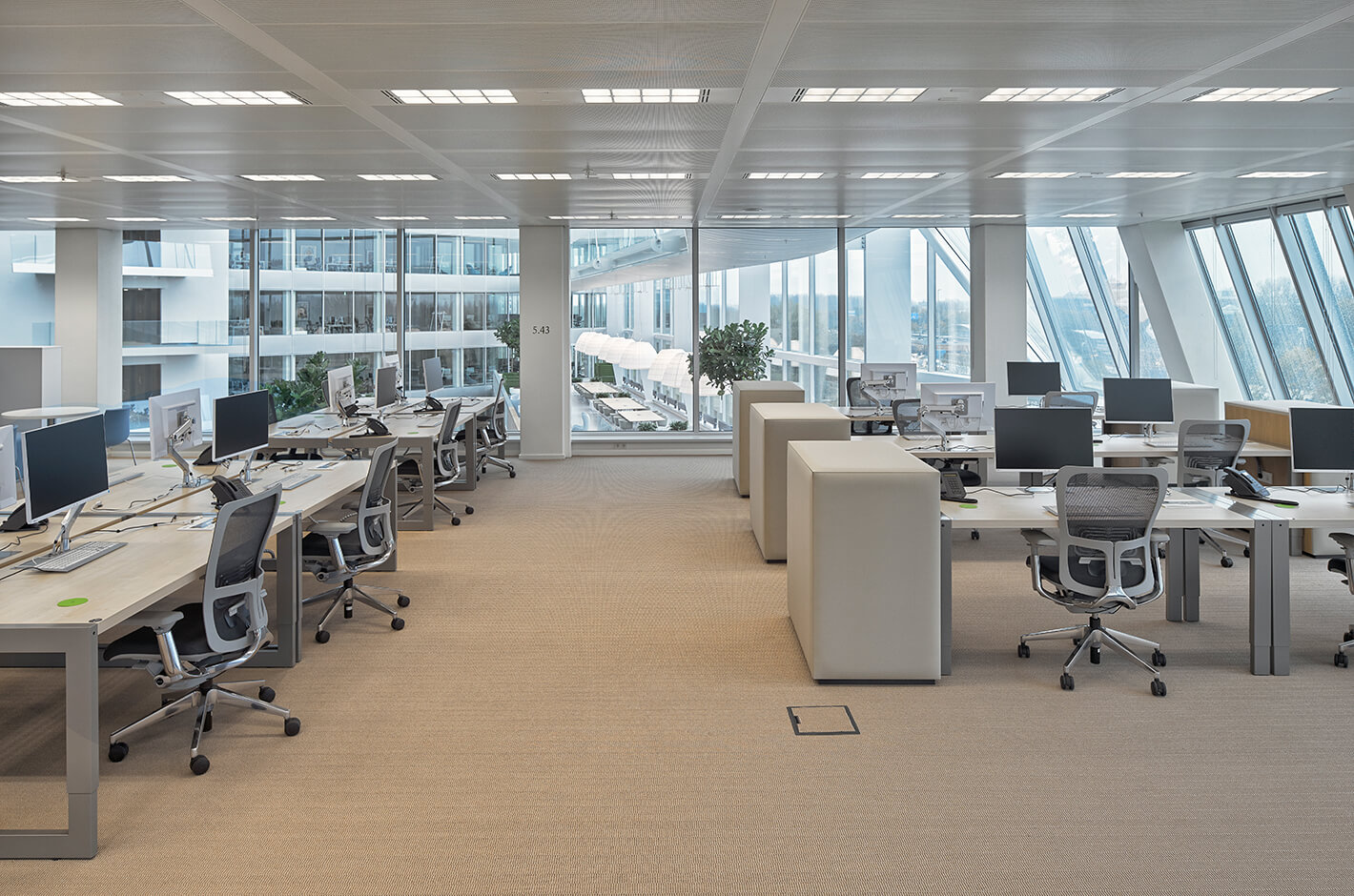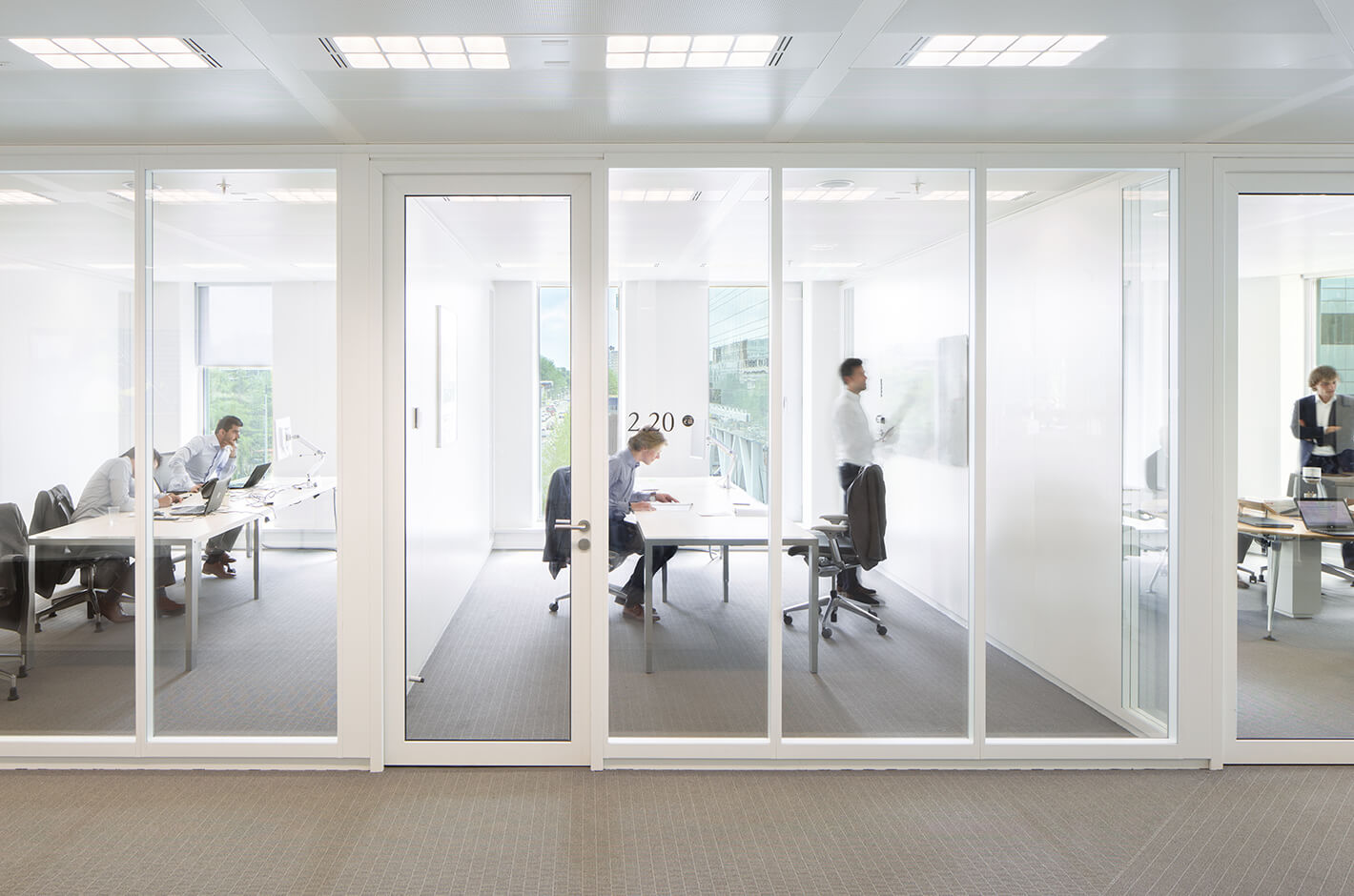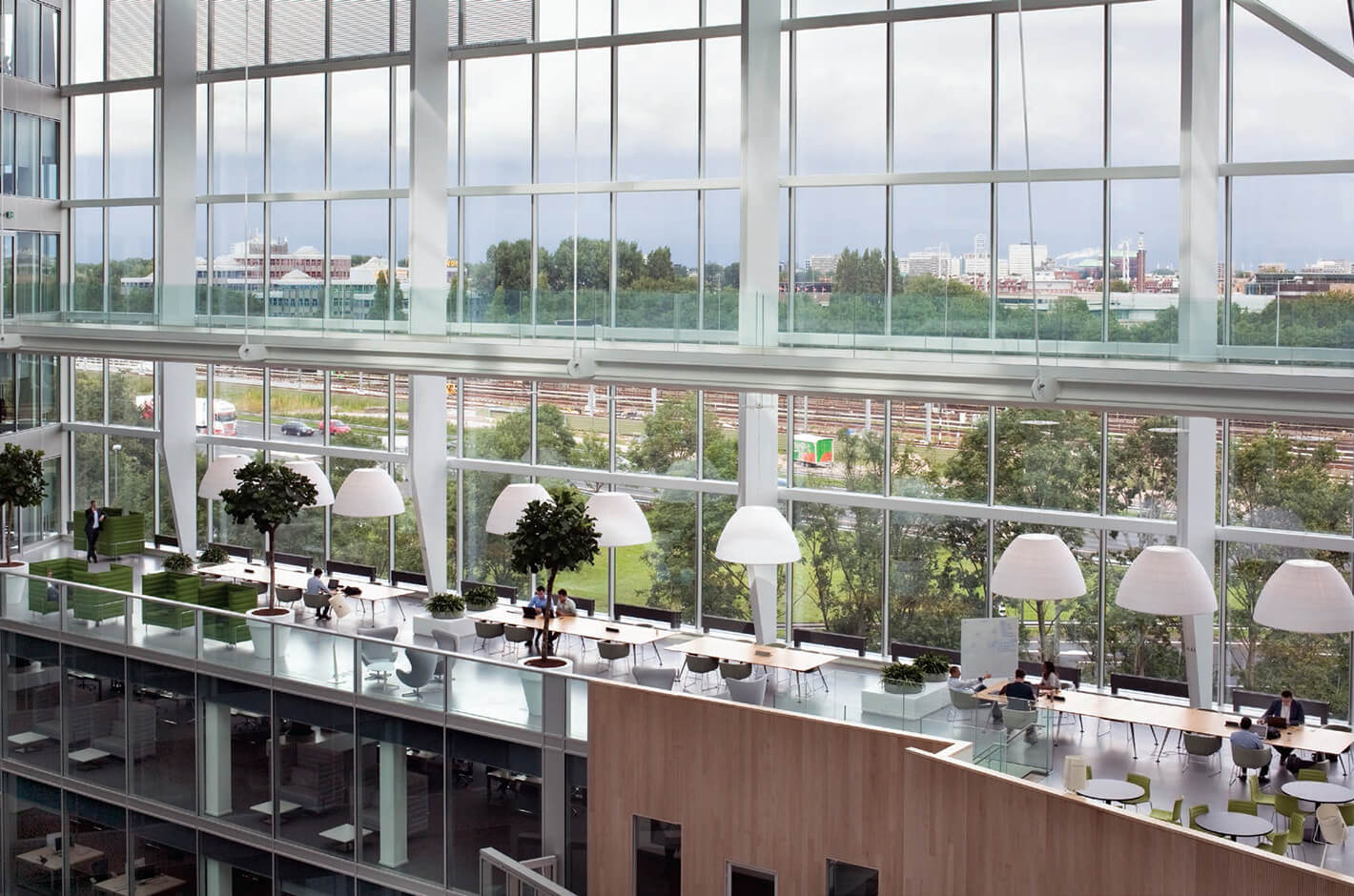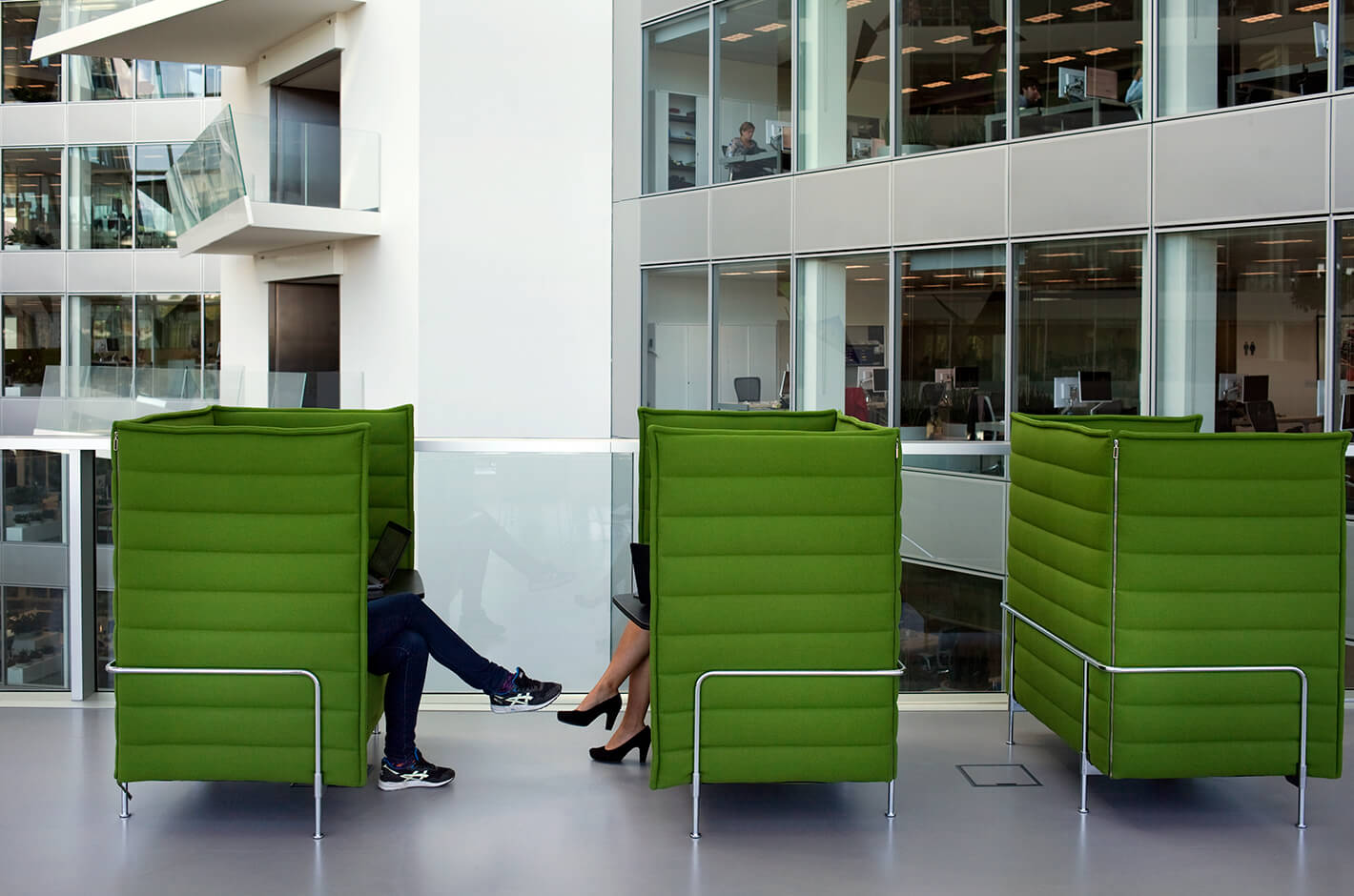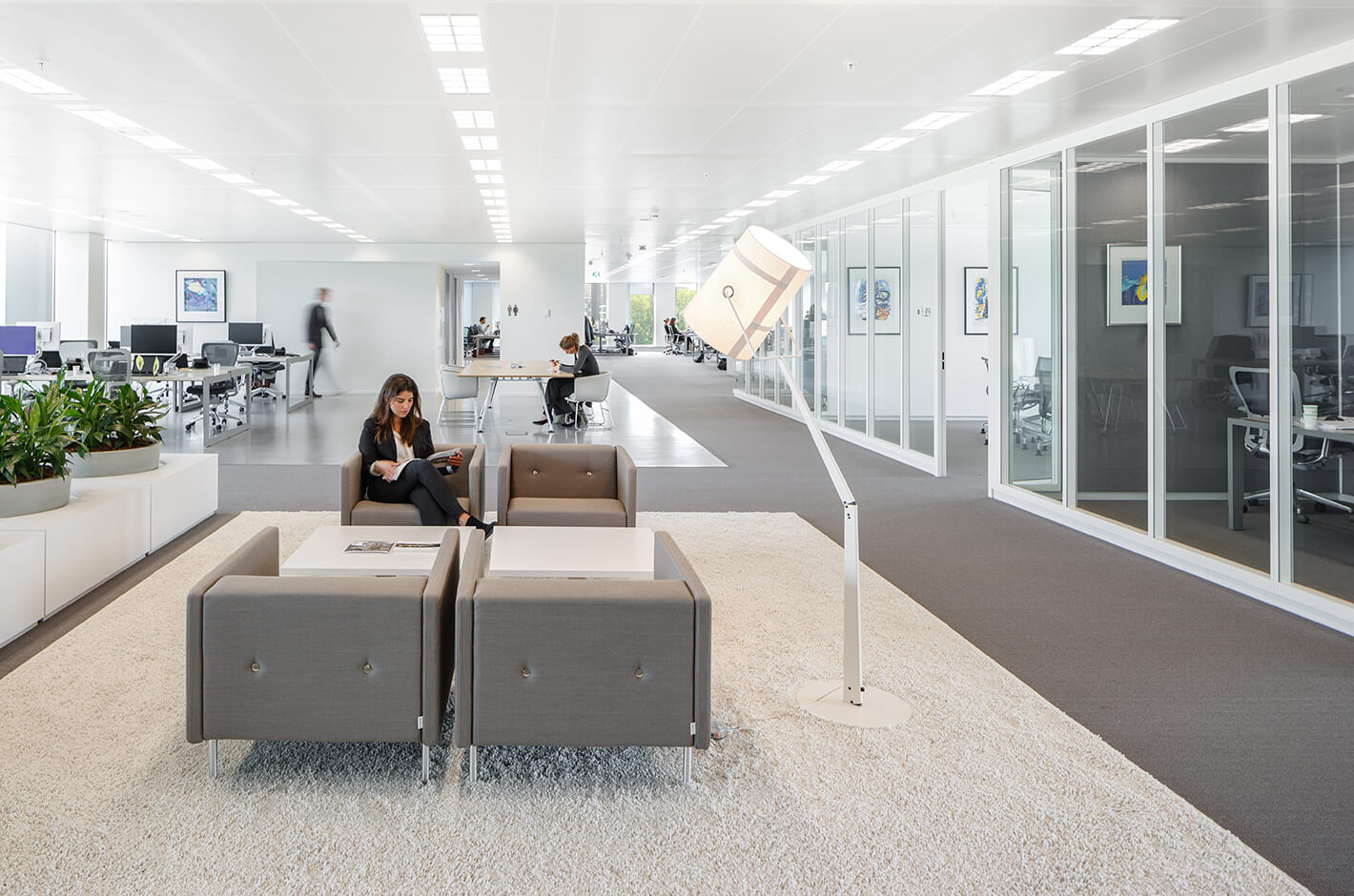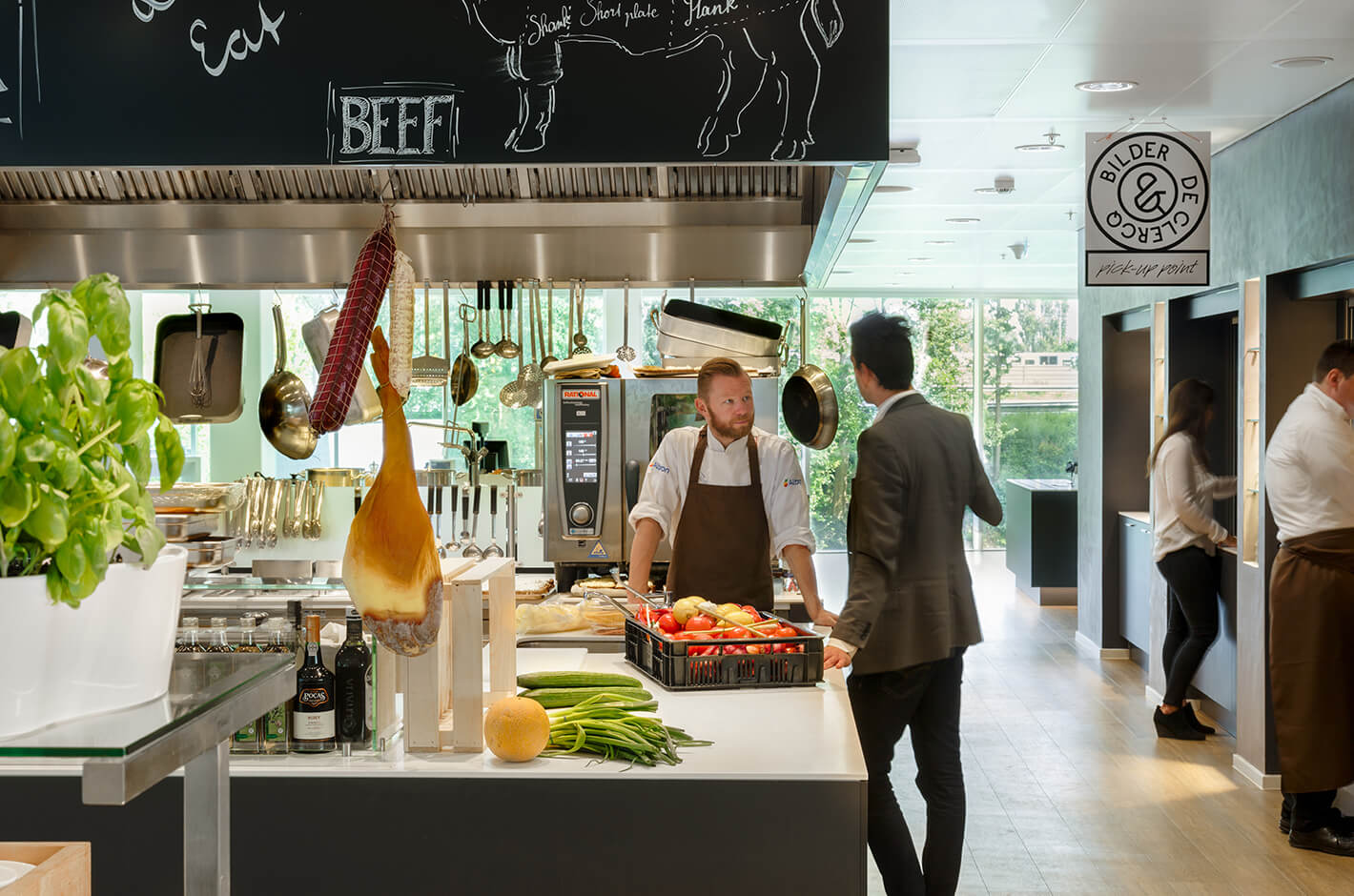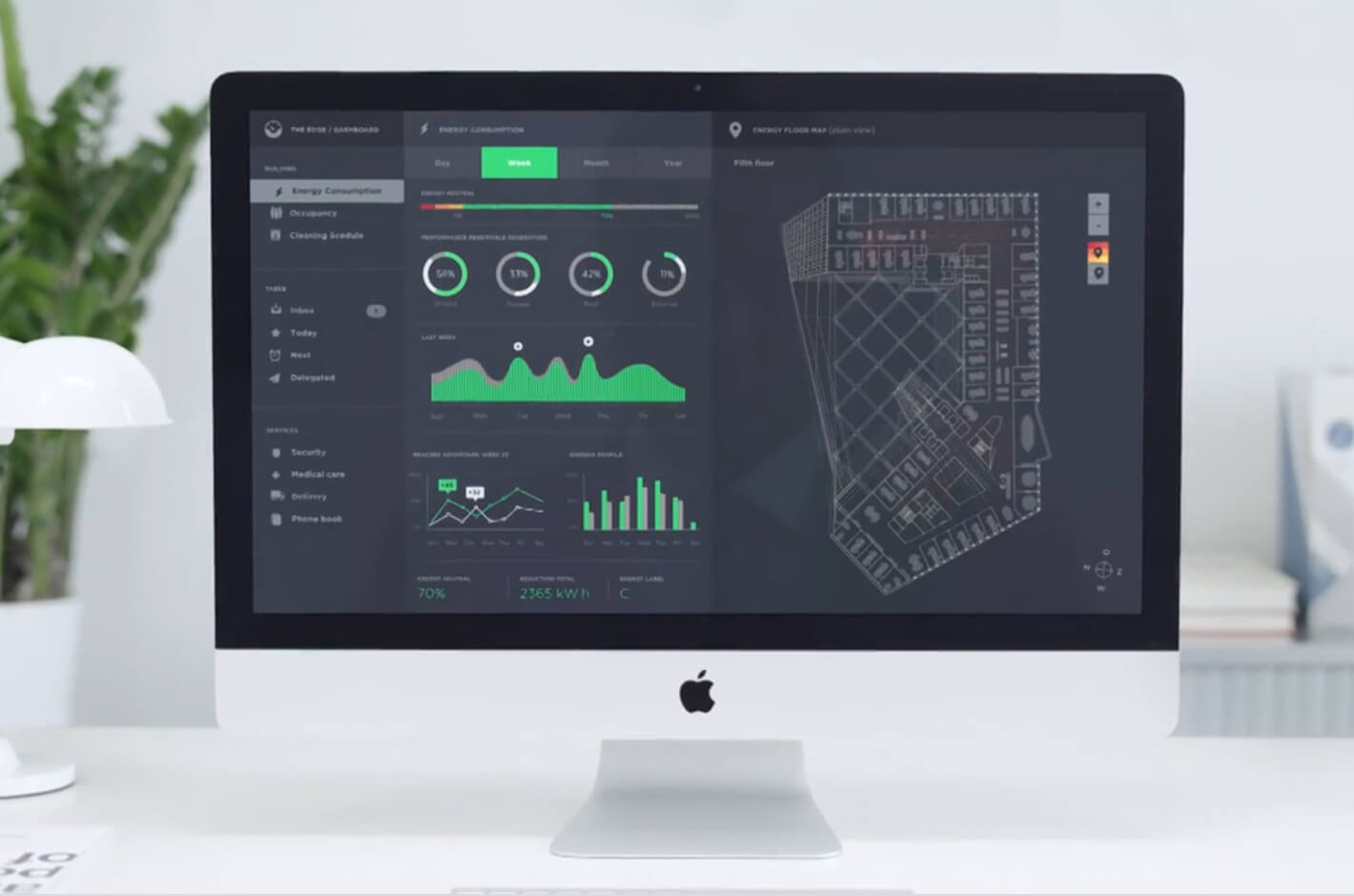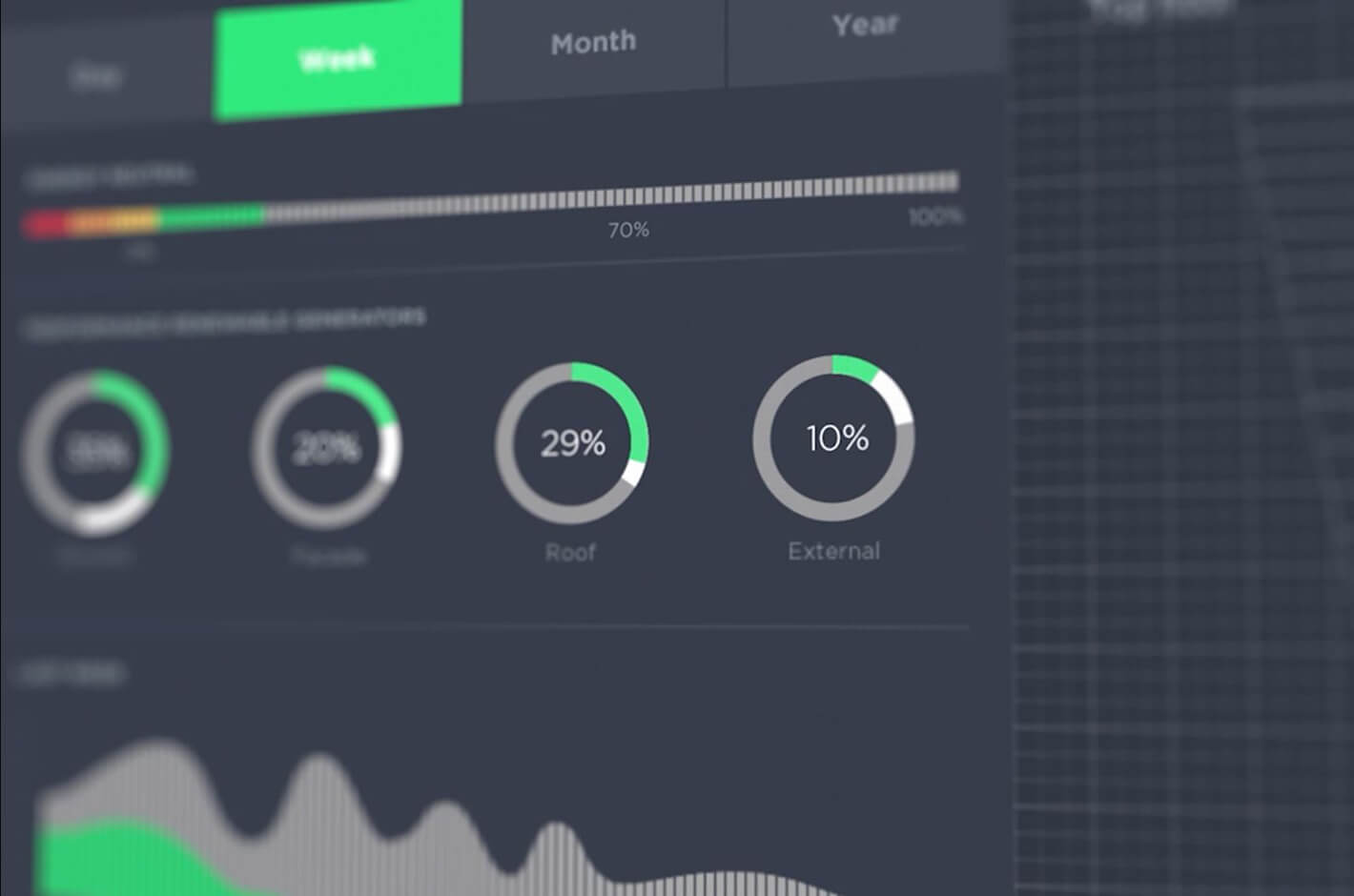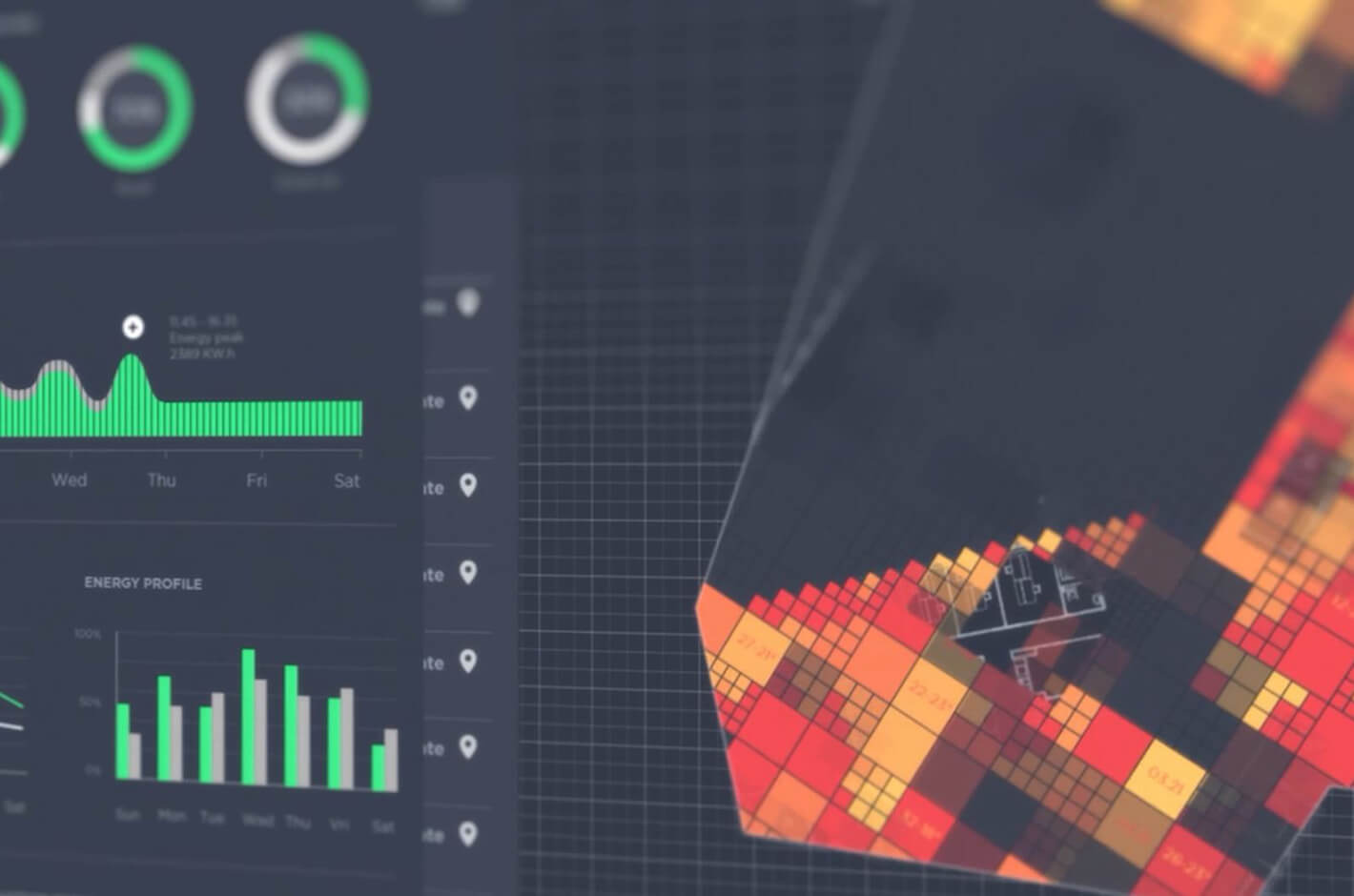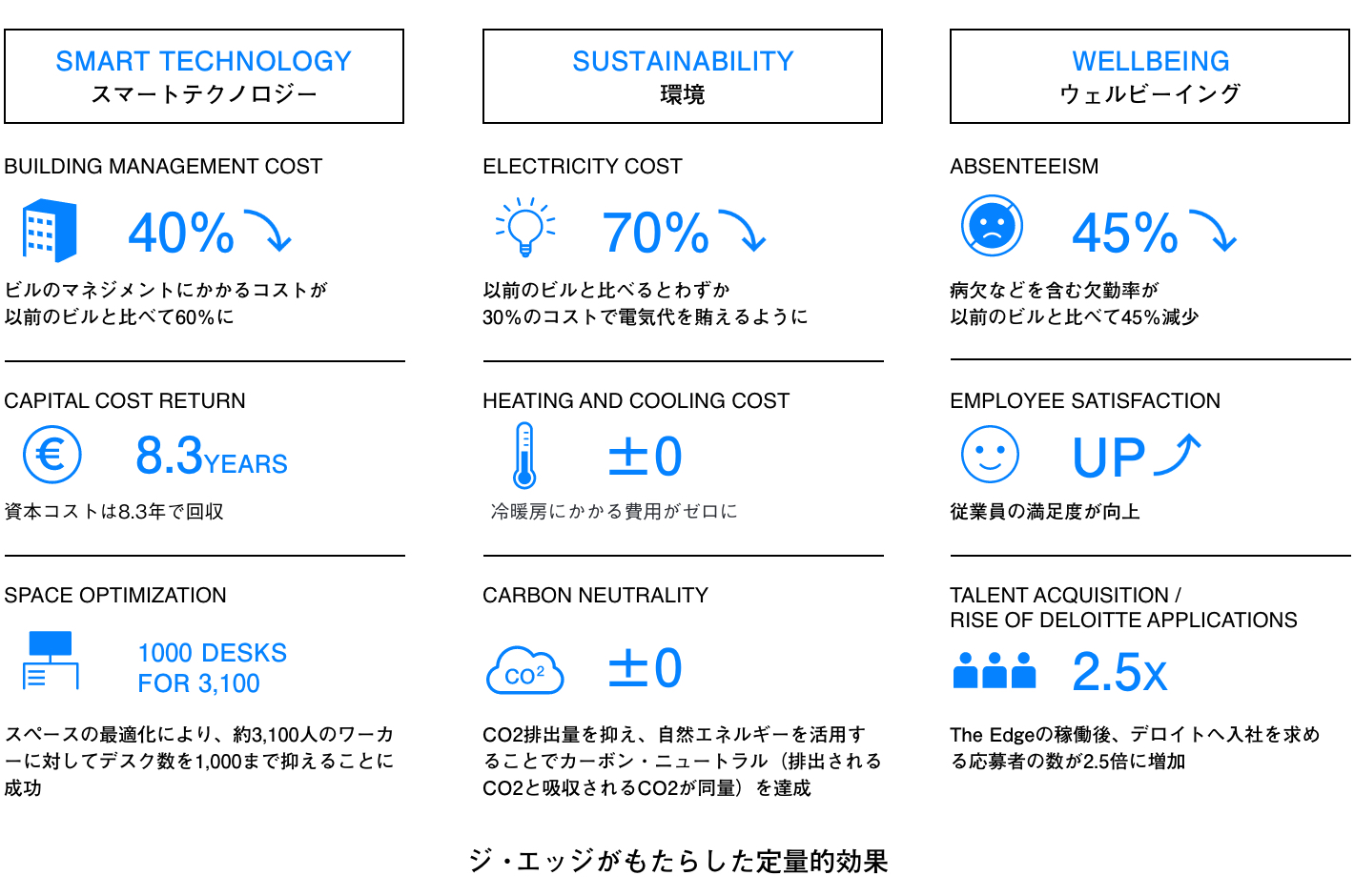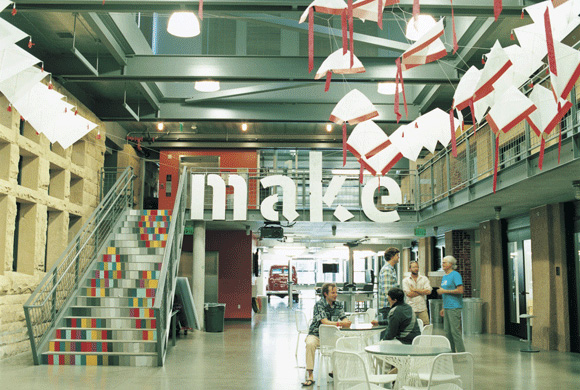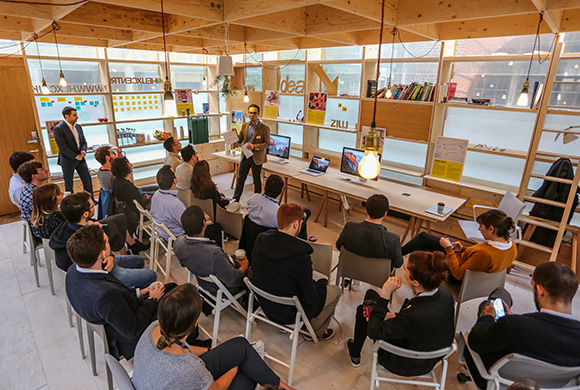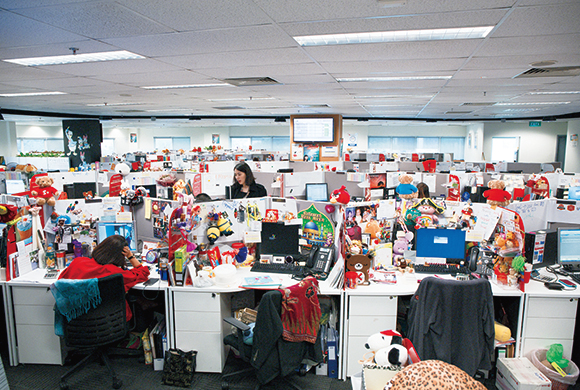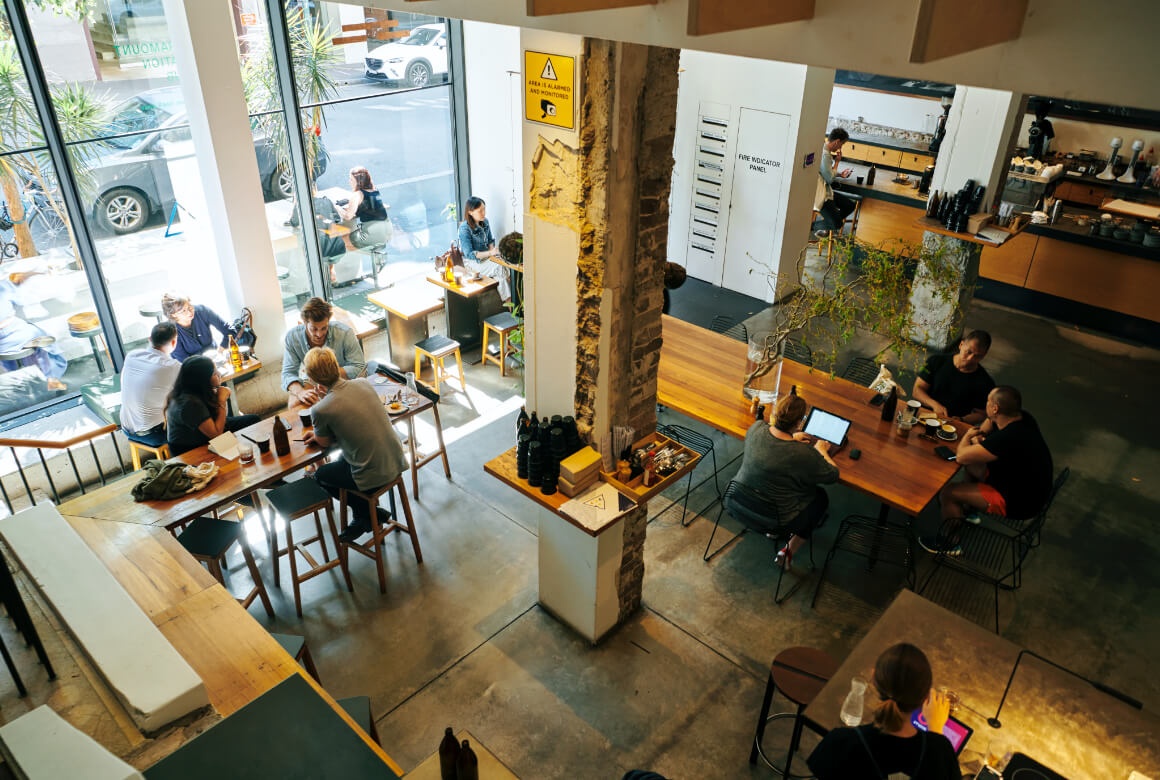Workplace
Jul. 5, 2021
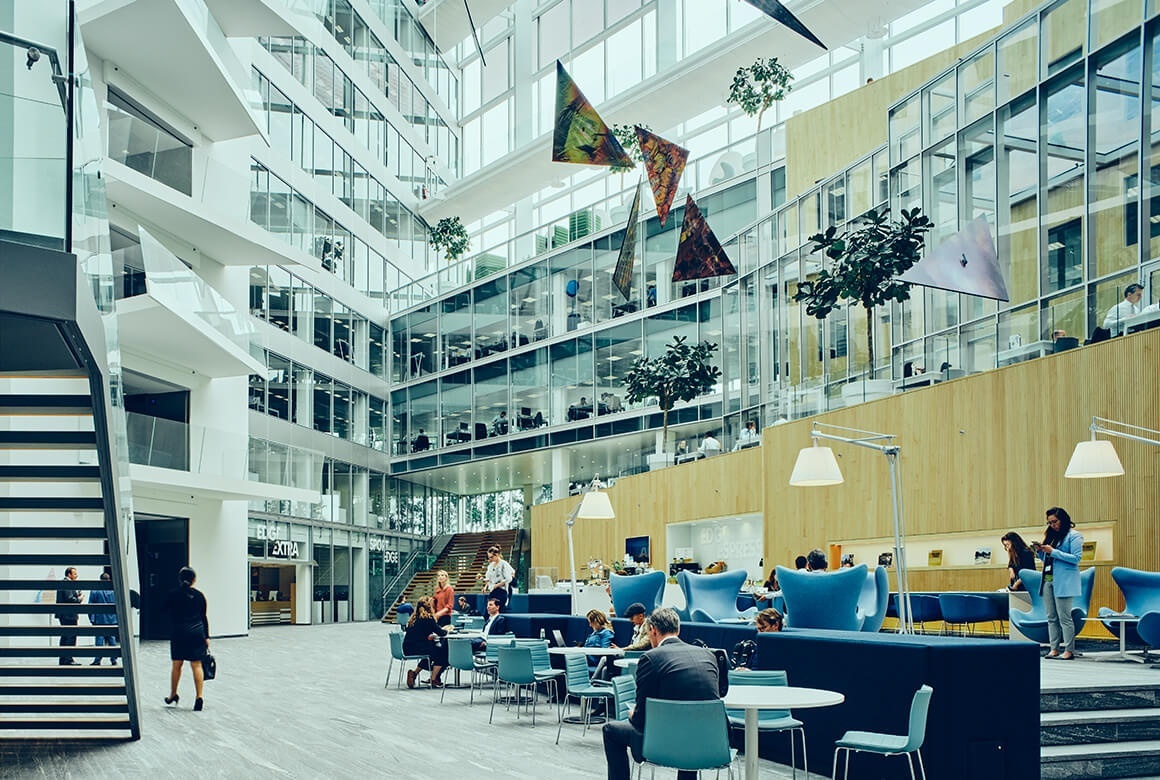
A pioneering smart building that cultivates “experiences”
[The Edge] Amsterdam, The Netherlands
The building The Edge—known as the first to introduce technology that enhances employee experience in real time—paved the way for a new era of smart buildings that went beyond the conventional idea that “smart” simply means “sustainable.” Finding available workspaces, looking up the whereabouts of colleagues, unlocking lockers and doors, all suddenly became accessible through a user-friendly app. The Edge thus became one of the first buildings to embrace the app-centric workplace, changing the way employees work.
Although The Edge is a tenant-leased building, because 60% is occupied by the firm Deloitte, the general appearance and design caters to the Deloitte brand. In fact, the aforementioned building app, which all tenants can access, was the product of a collaboration between Deloitte and the Delft University of Technology that produced the startup Mapiq. Also notable is that the app is a mashup of several systems developed by a number of tenant startups, and that the building’s software is continuously being updated, earning it the nickname: the “computer with a roof.”
What really defines The Edge as the world’s smartest building, though, is its strength in four key areas: sustainability, well-being, smart technology, and social interactivity.
Starting with sustainability, Europe’s leading sustainability assessment method BREEAM gives it an environmental performance score of 98.4%, the highest in the world. There are several reasons for this. First, the atrium is north-facing so the building is less impacted by direct sunlight, allowing for a larger opening in the facade. In addition, it’s strategic interior layout allows sunlight to reach an impressive 70% of desk space. And the incorporation of renewable energy, including an electric thermal storage heater that uses the aquifer 130 meters below ground to store warm water during the summer for use in the winter, saves the building a massive amount of energy.
The Edge is also dedicated to maximizing the well-being of its users. The abundant natural light throughout the building promotes a sense of optimism, enhancing productivity and creativity. The app also enables each employee to adjust lighting and temperature to their liking, and there’s a beautiful in-house restaurant serving locally sourced fresh ingredients.
Space utilization is also extremely efficient. The initial design allocated 3,100 desk spaces for each of the 3,100 Deloitte employees in a 50,000m² area, but the collapse of Lehman Brothers triggered a rebalancing of cost and space. The new design accommodates 1,000 desks for the 3,100 employees in a total area of 40,000m², and although on paper that means less space per employee, it also allows for the flexibility of activity-based working(ABW). The workspace now offers a choice of desks, sofas, standing desks, booths, and so on, to accommodate different preferences, and the building’s abundant amenities including a deluxe fitness room are nothing short of impressive.
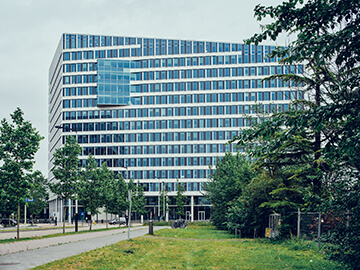
The building exterior. Lined with solar panels, the roof is tilted at 22 degrees toward the sun.
The Edge’s app and the app- centric work it enables are both products of smart technology. “A lot of people who talk about smart buildings talk about energy…but [that’s] only a very small portion of it,” says Erik Ubels, who came on board during the planning phase as the point person from Deloitte, and is now the CTO of EDGE, a real estate developer previously known as OVG Real Estate. That’s because the true objective of smart technology is to be smart—to help cut down on things like cleaning and maintenance costs, while also increasing user satisfaction, productivity, and experience.
What makes this smart tech possible are the four types of 28,000 sensors installed in the ceiling. Everything from the location of employees to the status of each of the coffee machines, which are managed by a catering company located on a lower floor, is IoT enabled. Are the machines clean, do they have enough milk, what about coffee beans? In other words, knowing the current status of the machines means eliminating unnecessary labor and maintenance. Likewise, power can be shut off as needed on unoccupied floors, and unused bathrooms do not need to be flagged for cleaning.
“If you run to a coffee machine and it doesn’t work, you’re not happy. If the copier doesn’t work, you’re not happy. If the toilets are not clean, you’re not happy,” explains Ubels. “You use sensors [to see] how is the building being used, how can we optimize it? From energy, from cleaning, from making you happy, productive, et cetera.”
The final component of smart technology is to promote the kind of social interactions that connect people. Ubels believes that what enables this is the integration of smart technology, sustainability, and well-being. For example, take the enormous atrium: though at first glance it seems like an indulgent use of space, it’s actually serving as a massive energy-efficient chimney, sending heat out to every corner of the building.
“With this atrium, where you can see all the different people working, you feel a vibe, you feel the building is alive,” notes Ubels. “[It’s] completely different than in a traditional building where you go in, and maybe you go to the 60th floor, and you have no idea what your colleagues are doing or what’s going on on the other floors, [but] this makes it more like a living organization. And even if you do not talk to your colleagues directly during the day but you’re just seeing them, you feel that you are part of a company, and you’re part of something. …people really like the effect of that.”
So how does Deloitte benefit from being headquartered in this smart building? One way is by attracting top talent and keeping the company competitive as an attractive place to work, in a global recruiting climate where hiring good employees is a major factor in determining the success of a company. Starting with millenials, the younger generation is looking for work environments that are positive, that promote good productivity and high levels of job satisfaction, and that are environmentally conscious. In other words, wanting to spend time in a specific space is a major factor in choosing where to work.
In that sense, The Edge exceeds the expectations of the younger generation. Deloitte now receives 2.5 times the number of applications, employee absences are down by 45%, and productivity has increased. Compared to conventional buildings, maintenance fees are 40% lower, and electricity costs 70% less. In an astonishingly short five years since completion, The Edge has already demonstrated the enormous impact that smart buildings can achieve.
text: Yusuke Higashi
photo: Rikiya Nakamura
From WORKSIGHT 15(2020.3)


